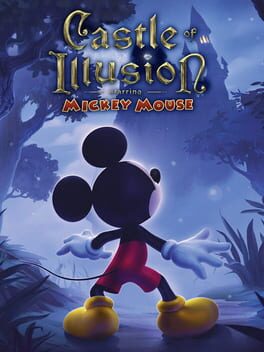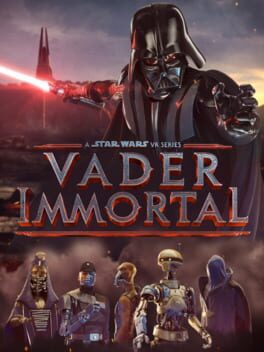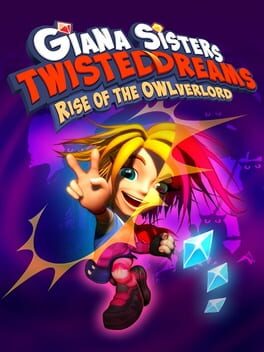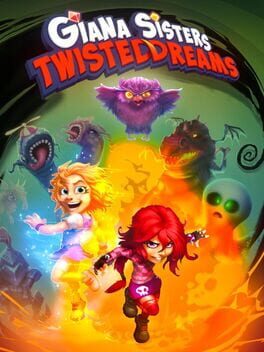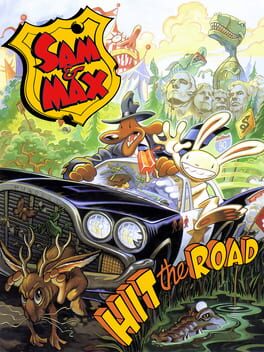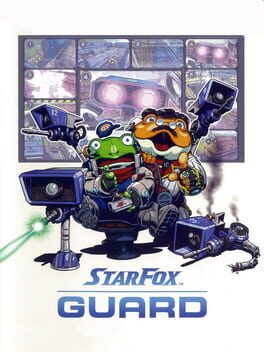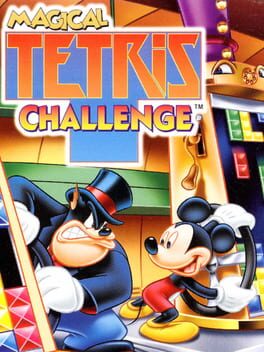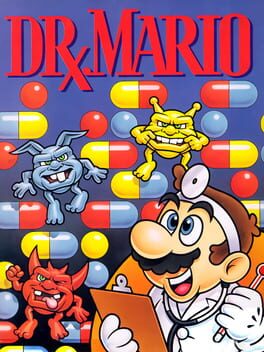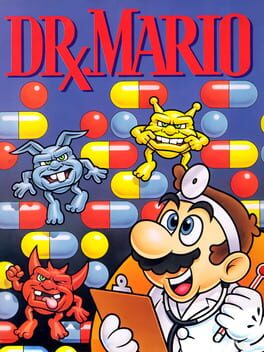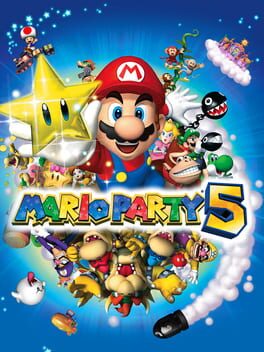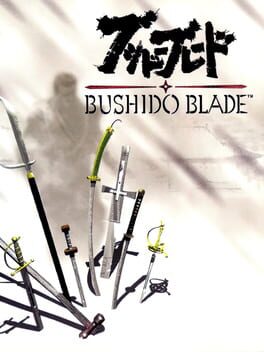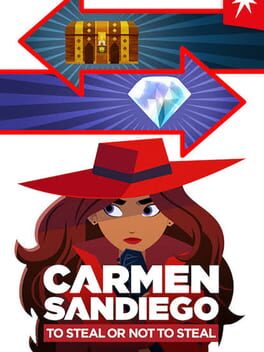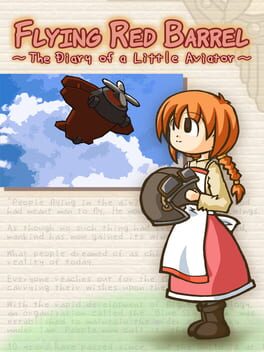MacBlank
Pretty faithful remake of the original, down to its limited and super simple design. Visuals get a nice update, with a lot of the reimagined levels feeling alive. Still retains the weird pacing choices of having five levels for seven MacGuffins. Mizrabel's completely overhauled fight is a neat change of pace.
NONE OF THAT MATTERS. You play this game for the added narrator. Holy moly, does the narrator add so much to this experience. It's so simple yet so inspired, having this guy throw in fun little lines describing what Mickey's doing or thinking at each given moment. You might think that that's redundant or messing with the original's tonality or something, but I don't think so! Talking about Mickey having to be brave or the illusory monsters he has to fight or whatever is exactly the sort of thing that would've pulled me into this game as a kid. This is the sort of thing I want to see added to this endless conga line of remakes we're getting these days.
My very favorite line (paraphrased, since it's been a bit)- "Mickey remembered the advice his friend Donald gave him on adventures: never have them."
NONE OF THAT MATTERS. You play this game for the added narrator. Holy moly, does the narrator add so much to this experience. It's so simple yet so inspired, having this guy throw in fun little lines describing what Mickey's doing or thinking at each given moment. You might think that that's redundant or messing with the original's tonality or something, but I don't think so! Talking about Mickey having to be brave or the illusory monsters he has to fight or whatever is exactly the sort of thing that would've pulled me into this game as a kid. This is the sort of thing I want to see added to this endless conga line of remakes we're getting these days.
My very favorite line (paraphrased, since it's been a bit)- "Mickey remembered the advice his friend Donald gave him on adventures: never have them."
I played the remake first, which naturally dampened what I got out of the original. But the original ain't bad either. Simple, but not bad.
This is probably a pretty decent "baby's first platformer". It's pretty straightforward, with the main nuances being Mickey's slow, floaty movement and his projectile game. The game is very forgiving, though not a complete gimme - Continues are limited. I respect that you still have to put some effort in to learn stuff, even if the remake suggests that this is less a deliberate choice on SEGA's part and more a natural consequence of expected game design.
The game sure doesn't feel much like a Mickey Mouse title. If it wasn't for Mickey and Minnie, and Mizrabel kinda looking like Snow White's Evil Queen, you could mistake this as being any sort of generic cutesy fantasy platformer. But I guess it's all right in its own respect. Animation on Mickey's pretty solid, anyway, even if it's a far cry from Virgin's later efforts.
It'd always been weird to me that there are only five levels but seven collectables. Like so you have the Rainbow Gems, implying seven, but you don't have a full set of seven levels to make up for them? Why not come up with some other theming and make the Gems a set of five, then? Odd stuff.
Even on just the Genesis, I'd probably take any other Disney title, but I can respect this being pretty impressive if you were a kid in a pre-Sonic world.
This is probably a pretty decent "baby's first platformer". It's pretty straightforward, with the main nuances being Mickey's slow, floaty movement and his projectile game. The game is very forgiving, though not a complete gimme - Continues are limited. I respect that you still have to put some effort in to learn stuff, even if the remake suggests that this is less a deliberate choice on SEGA's part and more a natural consequence of expected game design.
The game sure doesn't feel much like a Mickey Mouse title. If it wasn't for Mickey and Minnie, and Mizrabel kinda looking like Snow White's Evil Queen, you could mistake this as being any sort of generic cutesy fantasy platformer. But I guess it's all right in its own respect. Animation on Mickey's pretty solid, anyway, even if it's a far cry from Virgin's later efforts.
It'd always been weird to me that there are only five levels but seven collectables. Like so you have the Rainbow Gems, implying seven, but you don't have a full set of seven levels to make up for them? Why not come up with some other theming and make the Gems a set of five, then? Odd stuff.
Even on just the Genesis, I'd probably take any other Disney title, but I can respect this being pretty impressive if you were a kid in a pre-Sonic world.
I did play all three episodes, but I don't think I have a ton of unique commentary across the trilogy, so I'm grouping 'em together at once.
Years ago, I had the chance to play a pick-up game of the Star Wars tabletop RPG at a convention. At the time, I decided I wanted my character to be a Force-sensitive janitor, because that seemed funny to me - just some random guy who happens to be Force-sensitive, who isn't really part of the Jedi or Sith or whathaveyou but is just kinda doing his own thing. I feel like that campaign was symbolic in a lot of respects of my relationship with Star Wars as a cultural phenomenon. By way of example, I was riding along with people who had been playing the game since the 70s, and they ended up having an in-character conversation for an hour in Jawa (none of us were Jawas), and I just kinda had to sit there for the duration of it.
But it's relevant to mention here because, as much as I can get swept away by the grand, sweeping stories of political factions, and as much as I can get caught up in individual stories about certain characters (ahem), after a certain point I just kinda feel like too many random people can do Force stuff, and having each and every one of these guys interface directly with major factions or main characters like Darth Vader sort of makes the galaxy feel a little smaller to me.
I know it's probably unfair to pick on this game for that sorta thing. Any Star Wars video game is gonna have elements of power fantasy, doubly so for a Virtual Reality game. It'd be a little strange if, in a universe where people possess mystical powers, all you could do in the tie-in VR game was bulls-eye Womp Rats or something. Still, it's the sort of thing that runs through the back of my mind for this experience.
Vader Immortal is not fully confident in letting the player roam 3D space - but that's not a specific indictment, since many VR games are anxious about that sorta thing. Actually, that there is some wandering around here, even if it's just on-rails, is decently interesting. But the large thrust of the game is getting from one shooting gallery or cutscene set piece to another, and it does a decent enough job at that.
I kinda think of this game like a decent theme park ride with a good budget. It's fun and memorable while it lasts, but more something I think of as a decent diversion than something with a gripping narrative. I don't remember a whole lot about the actual experience, aside from some decent messing around with Stormtroopers, Jedi Outcast-style. I'll admit I'd rather be playing Jedi Outcast, but I know myself well enough to recognize that's nostalgia speaking. No reason why this can't be someone else's Jedi Outcast.
Years ago, I had the chance to play a pick-up game of the Star Wars tabletop RPG at a convention. At the time, I decided I wanted my character to be a Force-sensitive janitor, because that seemed funny to me - just some random guy who happens to be Force-sensitive, who isn't really part of the Jedi or Sith or whathaveyou but is just kinda doing his own thing. I feel like that campaign was symbolic in a lot of respects of my relationship with Star Wars as a cultural phenomenon. By way of example, I was riding along with people who had been playing the game since the 70s, and they ended up having an in-character conversation for an hour in Jawa (none of us were Jawas), and I just kinda had to sit there for the duration of it.
But it's relevant to mention here because, as much as I can get swept away by the grand, sweeping stories of political factions, and as much as I can get caught up in individual stories about certain characters (ahem), after a certain point I just kinda feel like too many random people can do Force stuff, and having each and every one of these guys interface directly with major factions or main characters like Darth Vader sort of makes the galaxy feel a little smaller to me.
I know it's probably unfair to pick on this game for that sorta thing. Any Star Wars video game is gonna have elements of power fantasy, doubly so for a Virtual Reality game. It'd be a little strange if, in a universe where people possess mystical powers, all you could do in the tie-in VR game was bulls-eye Womp Rats or something. Still, it's the sort of thing that runs through the back of my mind for this experience.
Vader Immortal is not fully confident in letting the player roam 3D space - but that's not a specific indictment, since many VR games are anxious about that sorta thing. Actually, that there is some wandering around here, even if it's just on-rails, is decently interesting. But the large thrust of the game is getting from one shooting gallery or cutscene set piece to another, and it does a decent enough job at that.
I kinda think of this game like a decent theme park ride with a good budget. It's fun and memorable while it lasts, but more something I think of as a decent diversion than something with a gripping narrative. I don't remember a whole lot about the actual experience, aside from some decent messing around with Stormtroopers, Jedi Outcast-style. I'll admit I'd rather be playing Jedi Outcast, but I know myself well enough to recognize that's nostalgia speaking. No reason why this can't be someone else's Jedi Outcast.
Weirdly phenomenal? Lessons were learned from the base game and applied here, resulting in a suite of frankly kickass levels. Now that the developers are confident with Twisted Dreams' mechanical identity, they're willing to go all-out with the level design, resulting in a ton of huge, open obstacle-driven areas that leverage the most out of what both versions of Giana can do. The game practically becomes a spectacle platformer here, with how effortless it is to drift around or chain together fireball dashes.
It is over and done with pretty quickly, so you're here for a good time, not a long time. Consequently, I miiiight be overrating it here. But I dunno, there really is something to this set of levels that makes me wish Black Forest Games did more with this franchise. Ah, well.
It is over and done with pretty quickly, so you're here for a good time, not a long time. Consequently, I miiiight be overrating it here. But I dunno, there really is something to this set of levels that makes me wish Black Forest Games did more with this franchise. Ah, well.
I'm fond of Giana Sisters entirely for this Port Sherry comic. It is perhaps entirely missing the point of the comic to go from it to a more modern revival, but what can I say?Anyway, I'd clocked this game years ago, only loosely aware of The Great Giana Sisters, and thought it looked pretty decent, so this was a long overdue visit even outside the comic.
Twisted Dreams is a standard 2D platformer ¡with a twist! The player controls Giana, who is able to switch back and forth between her "cute" and "punk" forms at will. Cute Giana can float to the ground by spinning, Dixie Kong style. Punk Giana gets a fiery midair dash, though if she hits a wall, she'll bounce off at a 60° angle. This can be chained, resulting in sequences where Punk Giana bounces all the hell over the place. Also, it's a homing attack.
As you might guess, Punk Giana is way more fun to play as. I mean, the instrumentation changes whenever she appears to covers by Machinae Supremacy! It's not even fair. But luckily for Cute Giana, this game is less Donkey Kong Country and more Ikaruga - you're changing characters to navigate unique obstacles and collect uniquely-colored collectables. Both forms get their time in the spotlight.
Twisted Dreams is a case where the core gameplay is surprisingly tight, but the level design doesn't make the best use of it. Giana is actually quite fun to control as the player grows more confident with her momentum and the ability to switch forms midair, learning how to extend jumps. There's the makings of an excellent momentum-based platformer here.
If only the level design really teased out that potential! The levels that exist are generally fine, but they feel like they were designed without Giana's full suite of abilities in mind. Like, yes, switching forms comes up a lot, between the red/green platforms and gems that only exist for one version, but I never fully feel like the levels here are getting the most out of how quickly Punk Giana can move, or how long Cute Giana can drift. By way of example, there are so many stretches where Giana's just walking from one cluster of obstacles to another cluster of obstacles, like each set represents a different suite of ideas or something. I think, whenever the player finds themselves using the dash move to get to the next set of stuff rather than as part of navigating obstacles, that's a sign that the level design there has fallen off.
I... also don't love the art style? I think the visual direction is quite strong, how the game world switches between dark and light in contrast to Giana's Cute/Punk forms. But I don't really like any of these character designs, admittedly. Something about how stringy the hair looks, or how much it's trying to do stylized character models in a realistic aesthetic, or maybe the lighting...? I can't quite put my finger on it, but it's one of those where I like the animations and motion, but not these characters themselves.
Having said all of that, I still think this game is very much worth playing. The core is rock-solid, just in need of being teased out. But there is a DLC pack...
Twisted Dreams is a standard 2D platformer ¡with a twist! The player controls Giana, who is able to switch back and forth between her "cute" and "punk" forms at will. Cute Giana can float to the ground by spinning, Dixie Kong style. Punk Giana gets a fiery midair dash, though if she hits a wall, she'll bounce off at a 60° angle. This can be chained, resulting in sequences where Punk Giana bounces all the hell over the place. Also, it's a homing attack.
As you might guess, Punk Giana is way more fun to play as. I mean, the instrumentation changes whenever she appears to covers by Machinae Supremacy! It's not even fair. But luckily for Cute Giana, this game is less Donkey Kong Country and more Ikaruga - you're changing characters to navigate unique obstacles and collect uniquely-colored collectables. Both forms get their time in the spotlight.
Twisted Dreams is a case where the core gameplay is surprisingly tight, but the level design doesn't make the best use of it. Giana is actually quite fun to control as the player grows more confident with her momentum and the ability to switch forms midair, learning how to extend jumps. There's the makings of an excellent momentum-based platformer here.
If only the level design really teased out that potential! The levels that exist are generally fine, but they feel like they were designed without Giana's full suite of abilities in mind. Like, yes, switching forms comes up a lot, between the red/green platforms and gems that only exist for one version, but I never fully feel like the levels here are getting the most out of how quickly Punk Giana can move, or how long Cute Giana can drift. By way of example, there are so many stretches where Giana's just walking from one cluster of obstacles to another cluster of obstacles, like each set represents a different suite of ideas or something. I think, whenever the player finds themselves using the dash move to get to the next set of stuff rather than as part of navigating obstacles, that's a sign that the level design there has fallen off.
I... also don't love the art style? I think the visual direction is quite strong, how the game world switches between dark and light in contrast to Giana's Cute/Punk forms. But I don't really like any of these character designs, admittedly. Something about how stringy the hair looks, or how much it's trying to do stylized character models in a realistic aesthetic, or maybe the lighting...? I can't quite put my finger on it, but it's one of those where I like the animations and motion, but not these characters themselves.
Having said all of that, I still think this game is very much worth playing. The core is rock-solid, just in need of being teased out. But there is a DLC pack...
Man, I need to play more of the LucasArts games, if Hit the Road is anything to go by.
I played the later TellTale games before this, so it was neat seeing what Sam & Max's first (video game) outing was like. Turns out it's not too unfamiliar - while I'm sure "Sam & Max Save the World" is based on the cancelled "Freelance Police" game first and foremost, you can see the direct lineage throughout, in stuff like the cardboard box inventory and the player specifically controlling Sam with Max mostly doing his own thing or being there for hints.
But the upshot of the presentation style is that this game feels way less restrained than its sequel. Not sure if it's because the game is in 2D or because it's got the backing of LucasArts, but even at Sam & Max's most ambitious under TellTale (i.e. "The Devil's Playhouse"), we'd never quite see Sam & Max running around doing something so outrageous. TellTale's games highlight the zaniness of Steve Purchell's character writing, but here we really see his scenario writing and love for excessive environmental detail at work. Hard not to love stuff like people bungee-jumping out of Mount Rushmore, or the secret moleman lair in the Tunnel of Love, or famed naturalist John Muir.
(The thing to love about Sam & Max is if you talk about it out of context, you sound completely unhinged)
Sam & Max is at its best when it's able to present an exaggerated take on something, usually elements of American pop culture. In this case, it's skewering much of roadside Americana, and that gives it a wide sweeping field to play with. If you haven't driven around the US much, I don't know how well this will play for you (I guess most folks will get the Mystery Vortex's whole thing thanks to Gravity Falls).
Me, I love love love roadtrips, so I was very much at home with the shout-outs that you get a great cross-section of the experience here. The only thing that's really missing is a Wall Drug stand-in. But you don't really get the full effect without hundreds of miles of roadsigns, so I can accept that that one's outside the scope of this game. Otherwise, you have a lot of the very specific peculiarities that give roadside America its charm, properly sent-up and ridiculed for all its inherent absurdity.
I'll say also that playing it summer of 2020 really helped the whole experience. I couldn't do a summer vacation that year, so I decided it'd be fun to tackle this on-stream as a "road trip/summer vacation" title for everyone (viewable here). Really elevated the thing for me.
I played the later TellTale games before this, so it was neat seeing what Sam & Max's first (video game) outing was like. Turns out it's not too unfamiliar - while I'm sure "Sam & Max Save the World" is based on the cancelled "Freelance Police" game first and foremost, you can see the direct lineage throughout, in stuff like the cardboard box inventory and the player specifically controlling Sam with Max mostly doing his own thing or being there for hints.
But the upshot of the presentation style is that this game feels way less restrained than its sequel. Not sure if it's because the game is in 2D or because it's got the backing of LucasArts, but even at Sam & Max's most ambitious under TellTale (i.e. "The Devil's Playhouse"), we'd never quite see Sam & Max running around doing something so outrageous. TellTale's games highlight the zaniness of Steve Purchell's character writing, but here we really see his scenario writing and love for excessive environmental detail at work. Hard not to love stuff like people bungee-jumping out of Mount Rushmore, or the secret moleman lair in the Tunnel of Love, or famed naturalist John Muir.
(The thing to love about Sam & Max is if you talk about it out of context, you sound completely unhinged)
Sam & Max is at its best when it's able to present an exaggerated take on something, usually elements of American pop culture. In this case, it's skewering much of roadside Americana, and that gives it a wide sweeping field to play with. If you haven't driven around the US much, I don't know how well this will play for you (I guess most folks will get the Mystery Vortex's whole thing thanks to Gravity Falls).
Me, I love love love roadtrips, so I was very much at home with the shout-outs that you get a great cross-section of the experience here. The only thing that's really missing is a Wall Drug stand-in. But you don't really get the full effect without hundreds of miles of roadsigns, so I can accept that that one's outside the scope of this game. Otherwise, you have a lot of the very specific peculiarities that give roadside America its charm, properly sent-up and ridiculed for all its inherent absurdity.
I'll say also that playing it summer of 2020 really helped the whole experience. I couldn't do a summer vacation that year, so I decided it'd be fun to tackle this on-stream as a "road trip/summer vacation" title for everyone (viewable here). Really elevated the thing for me.
2016
This is the first Star Fox game I'm covering here? Huh, all right.
As a unique consequence of buying from video store clearance sales, I own a physical disc of this, but not Star Fox Zero. I've heard folks say that, of these two erstwhile companion pieces, Guard is the less-stinky counterpart to Zero. Admittedly I dunno that I share the sentiment, but Star Fox Guard is a pretty decent time all the same, even if it leaves me with a lot of questions.
Star Fox Guard was announced as "Project Guard", a neutral, nondescript tower defense tech demo. It seems as though Star Fox branding existed even back when the game was first announced, so I'm not sure why Nintendo was coy about the license for two years. At the same time, the game feels like it has very little to do with the series proper. Sure, you're ostensibly working with Slippy's Uncle Grippy (why invent a new character? Was Beltino Toad exorcised from this continuity?), and you get cameos from some of the cast, but otherwise, it's just sort of a generic sci-fi setting.
But it is pretty good. I've never gotten into Five Nights at Freddy's, but I've always respected the micromanagement aspect of it, of having to juggle between different cameras to monitor different entities. I think Guard is a great implementation of that type of design. Switching between cameras is a snap with the GamePad, and it's neat that you're still able to monitor other cameras not in focus, even if if's at a lower frame-rate and you're not able to target enemies with it. There's a nice cadence to gameplay, keeping the player constantly on their toes.
I will say that I don't think it's especially sophisticated as a tower defense game. Past the high concept, difficulty scales through enemies, not increased player abilities. You could make the argument that there's more purity of form to Guard by consequence, but I dunno - it was fun enough to play to credits, but I felt no real incentive to grind out beyond that. Still, within the specific design space Guard is exploring, it's quite good. One of those titles that's emblematic of what the Wii U was going for as a console.
As a unique consequence of buying from video store clearance sales, I own a physical disc of this, but not Star Fox Zero. I've heard folks say that, of these two erstwhile companion pieces, Guard is the less-stinky counterpart to Zero. Admittedly I dunno that I share the sentiment, but Star Fox Guard is a pretty decent time all the same, even if it leaves me with a lot of questions.
Star Fox Guard was announced as "Project Guard", a neutral, nondescript tower defense tech demo. It seems as though Star Fox branding existed even back when the game was first announced, so I'm not sure why Nintendo was coy about the license for two years. At the same time, the game feels like it has very little to do with the series proper. Sure, you're ostensibly working with Slippy's Uncle Grippy (why invent a new character? Was Beltino Toad exorcised from this continuity?), and you get cameos from some of the cast, but otherwise, it's just sort of a generic sci-fi setting.
But it is pretty good. I've never gotten into Five Nights at Freddy's, but I've always respected the micromanagement aspect of it, of having to juggle between different cameras to monitor different entities. I think Guard is a great implementation of that type of design. Switching between cameras is a snap with the GamePad, and it's neat that you're still able to monitor other cameras not in focus, even if if's at a lower frame-rate and you're not able to target enemies with it. There's a nice cadence to gameplay, keeping the player constantly on their toes.
I will say that I don't think it's especially sophisticated as a tower defense game. Past the high concept, difficulty scales through enemies, not increased player abilities. You could make the argument that there's more purity of form to Guard by consequence, but I dunno - it was fun enough to play to credits, but I felt no real incentive to grind out beyond that. Still, within the specific design space Guard is exploring, it's quite good. One of those titles that's emblematic of what the Wii U was going for as a console.
Alternative Title: "Tetris, But It's Rigged In Your Favor".
Decent enough competitive Tetris game, though the central gimmick means that if you have any Tetris know-how, you really can't be stopped. Basically, instead of your opponent dropping garbage blocks down your well on successful line clears, the game will sometimes drop really weird pieces, much larger and oddly-shaped compared to your usual Tetrominoes.
This has the potential for abuse, overwhelming a know-nothing player. But in execution, you run into the opposite issue where this makes the game too easy. See, the weird pieces will always slot neatly into the holes currently on your gameboard. So if you have decent pattern recognition, and you can move quickly enough, you can turn the tables on your opponent and waste 'em. Maybe that's more interesting in competitive, but in singleplayer, it just results in a quick campaign.
The Big Bad Wolf's one of your opponents, tho. Always nice to see him.
Decent enough competitive Tetris game, though the central gimmick means that if you have any Tetris know-how, you really can't be stopped. Basically, instead of your opponent dropping garbage blocks down your well on successful line clears, the game will sometimes drop really weird pieces, much larger and oddly-shaped compared to your usual Tetrominoes.
This has the potential for abuse, overwhelming a know-nothing player. But in execution, you run into the opposite issue where this makes the game too easy. See, the weird pieces will always slot neatly into the holes currently on your gameboard. So if you have decent pattern recognition, and you can move quickly enough, you can turn the tables on your opponent and waste 'em. Maybe that's more interesting in competitive, but in singleplayer, it just results in a quick campaign.
The Big Bad Wolf's one of your opponents, tho. Always nice to see him.
1990
A good alternative to the NES version. I have the same issues with its difficulty curve as the console version: after a certain point, the game will just up and decide to screw over the player for the hell of it. See my notes here for more info. But as a whole product, you can get a pretty equivalent experience, which is commendable for a cross-plat of this era.
The graphics taking a hit is to be expected - the Viruses aren't really cute in that gobliny sort of way like they were on NES - but I'm surprised to report that the music is a little stronger. Weirdly, it's this game's version of "Fever" that adds the descending melodic scale that bridges loops - striking in its absence from the original. "Chill" is about on-par with its NES version, which is commendable since "Chill" is such a complex song for this sound-chip. Naturally it's not as satisfying to watch the Viruses groove out, but otherwise, you're not really missing anything.
I guess the Cutscene Viruses are underwater rather than in a tree, and there are fewer cutscenes, but when that's the only thing really holding back the NES experience on handheld, you have in your hand a pretty good port. Of a game I don't love, perhaps, but hey.
The graphics taking a hit is to be expected - the Viruses aren't really cute in that gobliny sort of way like they were on NES - but I'm surprised to report that the music is a little stronger. Weirdly, it's this game's version of "Fever" that adds the descending melodic scale that bridges loops - striking in its absence from the original. "Chill" is about on-par with its NES version, which is commendable since "Chill" is such a complex song for this sound-chip. Naturally it's not as satisfying to watch the Viruses groove out, but otherwise, you're not really missing anything.
I guess the Cutscene Viruses are underwater rather than in a tree, and there are fewer cutscenes, but when that's the only thing really holding back the NES experience on handheld, you have in your hand a pretty good port. Of a game I don't love, perhaps, but hey.
1990
In singleplayer, a decent puzzler, though one prone to screwing over the player on higher levels. The act and cadence of dropping pills and clearing viruses is fine enough, sort of fun to orient your brain around that level of pattern recognition. But the only real way difficulty scales is by increasing the amount of Viruses in the well (on top of the Doc throwing faster pills as the match goes on).
At higher difficulties, the viruses are so high that it feels like a player's ability to clear the well is based on where the Viruses happen to spawn. Hard to stay on good terms with a game that, 9 times out of 10, decides it's gonna give the player an unfavorable game board without anything they can do about it. I think the game is at its best around levels 10-15, where there are enough Viruses that the player has to think about it, but not so many that the above scenario happens.
Decent animation and quite good music, though. "Fever" is of course the enduring classic, but I actually find I like "Chill" better, at least in this original version. Something about hearing that driving groove match pace with the Viruses' dance adds a good deal to the experience.
At higher difficulties, the viruses are so high that it feels like a player's ability to clear the well is based on where the Viruses happen to spawn. Hard to stay on good terms with a game that, 9 times out of 10, decides it's gonna give the player an unfavorable game board without anything they can do about it. I think the game is at its best around levels 10-15, where there are enough Viruses that the player has to think about it, but not so many that the above scenario happens.
Decent animation and quite good music, though. "Fever" is of course the enduring classic, but I actually find I like "Chill" better, at least in this original version. Something about hearing that driving groove match pace with the Viruses' dance adds a good deal to the experience.
2003
Played for the Tarvould's Quest Mario Party League, viewable here.
DIY Mario Party, basically. Hudson went all-in on the Capsule system, and the consequence is that the boards themselves end up feeling pretty dry. Few central gimmicks, little personality inherent to the boards, no major NPCs, nothing like that. Heck, even the unifying theming is pretty lackluster, with everything just being a generic "dream" of a given thing, not a dream ascribed to anyone in particular. The Star Spirits are really cool to see here, one of the few times Mario RPG characters were allowed to exist outside the RPG subseries, but Eldstar can only do so much to elevate the experience.
But the boards themselves are so bland to facilitate the Capsule system - a complete overhaul of the traditional Item system that lets players remodel board experience on the fly. It's certainly an intriguing idea, but it's definitely a rough first draft here. Not all of these should be functions accessible to the player at any given time (goodness sakes, making a Chance Time Item just lends itself to certain abuses), and not all of these are compelling outside of the fact that the player can throw them wherever (you probably should never use Hammer Bro Capsule on yourself). Also, the fact that the player has no agency in which Capsules they receive... kinda sucks?
Also booooooo this is the game that removed playable DK as well as Boo as a board function. I guess having a nice equivalent to Bowser is interesting, but it's a big bummer that it comes at the cost of one of the main series regulars!
I honestly have to say that the writing is pretty noticeably devoid of personality, too. Usually I don't think a ton about Mario Party's writing, but a lot of it reads like placeholder dialogue, so generic and unremarkable a lot of it is. There's even a bit where the narration for DK quickly switches tense to the first person! Has to be stock.
Having said all this - because Mario Party 5 places so much of its design into the players' hands, games become as interesting as the people playing the game. This is true of Mario Party in general; if there's one thing I've learned from Mario Party League, it's that Mario Party is at its most engaging once politics filter into the standard gameplay loop. But this is at its most apparent when it comes to Mario Party 5. This is probably why 5's singleplayer experience is as lopsided, as my friends have observed (me, I've never played this with fewer than two other players) - hard to create compelling politics and intrigue with CPU opponents. But when you have a full crew, and ESPECIALLY when you have the Miracle Capsules in play? Now you're on to something.
DIY Mario Party, basically. Hudson went all-in on the Capsule system, and the consequence is that the boards themselves end up feeling pretty dry. Few central gimmicks, little personality inherent to the boards, no major NPCs, nothing like that. Heck, even the unifying theming is pretty lackluster, with everything just being a generic "dream" of a given thing, not a dream ascribed to anyone in particular. The Star Spirits are really cool to see here, one of the few times Mario RPG characters were allowed to exist outside the RPG subseries, but Eldstar can only do so much to elevate the experience.
But the boards themselves are so bland to facilitate the Capsule system - a complete overhaul of the traditional Item system that lets players remodel board experience on the fly. It's certainly an intriguing idea, but it's definitely a rough first draft here. Not all of these should be functions accessible to the player at any given time (goodness sakes, making a Chance Time Item just lends itself to certain abuses), and not all of these are compelling outside of the fact that the player can throw them wherever (you probably should never use Hammer Bro Capsule on yourself). Also, the fact that the player has no agency in which Capsules they receive... kinda sucks?
Also booooooo this is the game that removed playable DK as well as Boo as a board function. I guess having a nice equivalent to Bowser is interesting, but it's a big bummer that it comes at the cost of one of the main series regulars!
I honestly have to say that the writing is pretty noticeably devoid of personality, too. Usually I don't think a ton about Mario Party's writing, but a lot of it reads like placeholder dialogue, so generic and unremarkable a lot of it is. There's even a bit where the narration for DK quickly switches tense to the first person! Has to be stock.
Having said all this - because Mario Party 5 places so much of its design into the players' hands, games become as interesting as the people playing the game. This is true of Mario Party in general; if there's one thing I've learned from Mario Party League, it's that Mario Party is at its most engaging once politics filter into the standard gameplay loop. But this is at its most apparent when it comes to Mario Party 5. This is probably why 5's singleplayer experience is as lopsided, as my friends have observed (me, I've never played this with fewer than two other players) - hard to create compelling politics and intrigue with CPU opponents. But when you have a full crew, and ESPECIALLY when you have the Miracle Capsules in play? Now you're on to something.
1997
Absolutely fascinating concept for a fighting game. You would think boiling down a fighter to its bare minimum would result in an extremely dry game without much of a hook, but you'd be quite wrong. Because any blow can be the killing strike, matches build with tension as they go on, particularly when either side begins sustaining injuries. Easy to fall into the fallacy of thinking an opponent's down and out, only to be caught off-guard by a carefully-timed killstrike from a kneeling opponent.
Of particular note to me are the controls, for how much they visually communicate their own ideas. Lightweight placed extreme consideration for how to represent their fighters' actions, and this is reflected in the layout of buttons on the PlayStation controller. Immediately you have the attack buttons, △/○/X as High/Mid/Low Attack - a descending order matching the buttons themselves. The last face button, □, is used for parries, which is to the left. Looking at it from the perspective of a player on the screen's left - as Player 1 would be at the start - the defensive □ is in a position retreating from the enemy, while the offensive ○ is advancing towards the enemy.
We also see this level of thought placed into the R1 and R2 buttons, which respectively are used to elevate or lower the player. On their own, R1 shifts to a higher stance while R2 shifts to a lower stance. Movement plus R2 makes the fighter crouch, and hitting R2 while the player is crouching makes the fighter go even lower than a crouch and fling dirt. Movement plus R1 lets the player climb a wall, and R1 out of a crouch turns the motion into a leap forward. There's a lot of very careful psychology like this to what the buttons do, and it's this sort of meticulous, deliberate design ethos that permiates a lot of what Bushido Blade is as an experience.
Bushido Blade feels a bit like a tech demo with all its offerings. Its emphasis on realistic weapon simulation, as well as mixing and matching eight weapons with six player characters, is pretty cool, and the game's main hook. Slash Mode is a fun challenge, very much a nod to traditional swordfighter movies. POV Mode is a complete gimmick, but darn if it isn't a cute idea. Link Mode is a cool idea - not a lot of games would make use of the ability to hook up multiple PS1s - but I've never had any Player 2s, so I can't vouch for it.
So, the hook for me has always been Bushido Blade's campaign. The initial draw there is how the game enforces its understanding of Bushido code - strike an opponent dishonorably (while they're talking, while they're vulnerable, etc), and the story admonishes the player with a bad ending. I'm always fascinated when a game bakes its moral code into its game systems, particularly if it's an established real-world code rather than the simple good/evil binary. But the campaign is quite short - potentially only six fights, in a game where every strike is a killing blow - and the endings are all melancholy and don't seem to resolve anything, so there's sort of an empty feeling a player has walking away from it.
...until they realize that there's a puzzle to finding the good ending. I don't mind spoiling it here: first, the player must navigate through the game world, screen by screen, as they look for their exit. Second, the player must clear every fight without sustaining damage. I guess, because each strike is a killing blow, the usual "don't lose a round" approach to a fighting game's true ending is an unrealistic approach?
I spent a couple hours on-stream trying to grind out a good ending, and while I was ultimately unsuccessful, I came away really appreciating the challenge being asked of the player here. That thing about tension building over the course of a match? That gets amplified considerably here, both during the first round escape sequence - even once you have the path memorized, a three-to-five minute run with an aggressive opponent constantly on the player's heels - then in the subsequent six fights. It's weirdly Katze, the first boss character who weilds a firearm, who becomes a breather round - striking, because he's initially the most annoying of the game's bosses for his ability to insta-kill at range. Everything else, including the normal, non-boss characters? Could stop your attempt cold.
There's sort of a weird meditative quality to grinding out the good ending, given that first round escape sequence. There's no music, just the noises of the wintry background as the player makes their escape. Once you solve the puzzle, the player's left alone with the empty nothingness of their flight, of everything being stripped away besides the instruments of death. I know I'm making a broad, sweeping statement on a culture with which I've barely interfaced, but I dunno - it feels like there's something quintessentially Japanese to this experience. Not bad for a game designed after kids beating sticks against each other on the playground.
Of particular note to me are the controls, for how much they visually communicate their own ideas. Lightweight placed extreme consideration for how to represent their fighters' actions, and this is reflected in the layout of buttons on the PlayStation controller. Immediately you have the attack buttons, △/○/X as High/Mid/Low Attack - a descending order matching the buttons themselves. The last face button, □, is used for parries, which is to the left. Looking at it from the perspective of a player on the screen's left - as Player 1 would be at the start - the defensive □ is in a position retreating from the enemy, while the offensive ○ is advancing towards the enemy.
We also see this level of thought placed into the R1 and R2 buttons, which respectively are used to elevate or lower the player. On their own, R1 shifts to a higher stance while R2 shifts to a lower stance. Movement plus R2 makes the fighter crouch, and hitting R2 while the player is crouching makes the fighter go even lower than a crouch and fling dirt. Movement plus R1 lets the player climb a wall, and R1 out of a crouch turns the motion into a leap forward. There's a lot of very careful psychology like this to what the buttons do, and it's this sort of meticulous, deliberate design ethos that permiates a lot of what Bushido Blade is as an experience.
Bushido Blade feels a bit like a tech demo with all its offerings. Its emphasis on realistic weapon simulation, as well as mixing and matching eight weapons with six player characters, is pretty cool, and the game's main hook. Slash Mode is a fun challenge, very much a nod to traditional swordfighter movies. POV Mode is a complete gimmick, but darn if it isn't a cute idea. Link Mode is a cool idea - not a lot of games would make use of the ability to hook up multiple PS1s - but I've never had any Player 2s, so I can't vouch for it.
So, the hook for me has always been Bushido Blade's campaign. The initial draw there is how the game enforces its understanding of Bushido code - strike an opponent dishonorably (while they're talking, while they're vulnerable, etc), and the story admonishes the player with a bad ending. I'm always fascinated when a game bakes its moral code into its game systems, particularly if it's an established real-world code rather than the simple good/evil binary. But the campaign is quite short - potentially only six fights, in a game where every strike is a killing blow - and the endings are all melancholy and don't seem to resolve anything, so there's sort of an empty feeling a player has walking away from it.
...until they realize that there's a puzzle to finding the good ending. I don't mind spoiling it here: first, the player must navigate through the game world, screen by screen, as they look for their exit. Second, the player must clear every fight without sustaining damage. I guess, because each strike is a killing blow, the usual "don't lose a round" approach to a fighting game's true ending is an unrealistic approach?
I spent a couple hours on-stream trying to grind out a good ending, and while I was ultimately unsuccessful, I came away really appreciating the challenge being asked of the player here. That thing about tension building over the course of a match? That gets amplified considerably here, both during the first round escape sequence - even once you have the path memorized, a three-to-five minute run with an aggressive opponent constantly on the player's heels - then in the subsequent six fights. It's weirdly Katze, the first boss character who weilds a firearm, who becomes a breather round - striking, because he's initially the most annoying of the game's bosses for his ability to insta-kill at range. Everything else, including the normal, non-boss characters? Could stop your attempt cold.
There's sort of a weird meditative quality to grinding out the good ending, given that first round escape sequence. There's no music, just the noises of the wintry background as the player makes their escape. Once you solve the puzzle, the player's left alone with the empty nothingness of their flight, of everything being stripped away besides the instruments of death. I know I'm making a broad, sweeping statement on a culture with which I've barely interfaced, but I dunno - it feels like there's something quintessentially Japanese to this experience. Not bad for a game designed after kids beating sticks against each other on the playground.
Oh hey, wasn't sure this would exist here. Thanks, dleo.
An interactive episode of Carmen Sandiego is a no-brainer (heck, that's practically what the gameshows were), so getting one for the Netflix show was practically expected. As its own thing, it's perfectly fine; Carmen and the Chief breaking the fourth wall might seem forced in most franchises, but it would seem more strange not to go for it here.
It is kind of weird that the educational element of the series was dropped in this! Even the Netflix show had been pretty decent about retaining the franchise's edutainment roots through most episodes' planning segments. I guess you get some regional trivia through some of the heists Carmen's forced to take, but it's never really underlined by the text. Not a big deal, I guess, simply a question of what the priorities were for this episode, but still kind of a bummer. Definitely just a supplement for the adventure- and character-driven part of the show rather than its educational goals.
That said, this is more than made up for by the reward you get for seeing it through to the good ending. What a fun little inclusion! Very much worth the half-hour or so it takes to get there.
An interactive episode of Carmen Sandiego is a no-brainer (heck, that's practically what the gameshows were), so getting one for the Netflix show was practically expected. As its own thing, it's perfectly fine; Carmen and the Chief breaking the fourth wall might seem forced in most franchises, but it would seem more strange not to go for it here.
It is kind of weird that the educational element of the series was dropped in this! Even the Netflix show had been pretty decent about retaining the franchise's edutainment roots through most episodes' planning segments. I guess you get some regional trivia through some of the heists Carmen's forced to take, but it's never really underlined by the text. Not a big deal, I guess, simply a question of what the priorities were for this episode, but still kind of a bummer. Definitely just a supplement for the adventure- and character-driven part of the show rather than its educational goals.
That said, this is more than made up for by the reward you get for seeing it through to the good ending. What a fun little inclusion! Very much worth the half-hour or so it takes to get there.
2003
I no longer remember with confidence how Ghost Master entered my life. I have conflicting memories of it. On one hand, I have a memory of seeing it near the checkout aisle of (of all places) a Menards. On the other hand, I sorta just remember it existing one day on the vanity in my sister's bedroom, the way Calvin & Hobbes inexplicably entered my life through a phantom collection on the bathroom counter. I think what happened was that my mother saw the Ghost Master box at the store and got it for my sister (who, while she hadn't yet evolved into her current form as a comfortably eccentric goth aunt, has always had a taste for the spooky). The Menards memory must just be a later encounter with a game I'd already met. Though, let's not underplay how weird that is: Menards is a place you go to to buy 2x4s, spackle, and pool noodles - not obscure British computer games about commanding ghosts to haunt the living.
I generally did not get along with my sister as a kid. We're cool now as adults, but for the longest time, she had no time or patience for me. This is for a number of reasons that I won't get into here, but it's important to note this for its consequence - a decent amount of my childhood was spent chasing after my sister, trying to get her into my interests. By way of example - at some point, once pigs develop wings, my sister owes me a game of Pokémon Cards.
I mention this because Ghost Master represents one of those rare childhood bonding experiences I was able to share with her.
Ghost Master is a strange, strange game. This probably represents why it was marketed as a "Sims" killer, despite the games being worlds apart - Ghost Master isn't an easy game to really sell people on. It's a real-time strategy game, but it's used for puzzling specifically. But the tone is super campy, only there's a lot of references to traditional mythology mixed in with its horror movie referenced... and there's a shout-out to "Impossible Mission" on the Commodore 64, why not...
In other words, it was the perfect game for us. There's a lot to be said for something that doesn't fall neatly into any sort of lone genre, that kind of has a cavalier approach at what it is and will do whatever it wants in the conveyance of that idea. The hook for my sister and me was the idea that you're orchestrating a ghost haunting - I mean, the intro video does a pretty great job communicating the game's tone and high concept. But there is soooo much more going on that kept us there, and still keeps us coming back after all these years.
For one, the presentation. Ross Mullan does an INCREDIBLE job as the narrator, commanding a ton of presence and adding so much character to the game's myriad silly proceedings. I actually think the cast does a phenomenal job all-around, with so many fun takes and voices. I cannot possibly convey how much joy I get out of some of these line reads. SUCH PREMEDITATED INDIGNITY MUST BE REPAID IN WRATHFUL SPITE. can't do much without electricity, dude. MY ACCURSED HUSBAND BURIED ME HERE IN THE DARKNESS. curse the progeny of monkeys, they who weave the waves, and cast their fellow beings into the deep, their tendrils swathed in stone. A MURDER OF CROWS; ANOINT THE WICKER MAN A TASTE OF BLOOD. make like linda blair and set his head a-spinnin'! I'D READ YOU YOUR RIGHTS, SCUMBAG, BUT YA AIN'T GOT ANY! went and got myself shot. but hey! i'm a professional. IT'S, LIKE, TOTALLY OUT THERE, AND I'M, LIKE, IN A MIRROR, Y'KNOW? betcha never seen a trickster with gams like these, huh? AH, HELLO! I LUCKY, AND THEES LUCKY'S BEEPING TABLE. oh! ah! to be seen! i had forgotten what it was like. such a... tiiiiingly feeeeling. STORMTALON, PRINCE AMONG ELEMENTALS, ANSWERS YOUR CALL OF THUNDER <dramatic inhale> AND LIGHTNING.
You might've noticed from some of those quotes as well, but man, the writing in this game is top notch. There's a ridiculous amount of artistry to how efficiently the game communicates its ideas. Like, to break it down, you have Brigit, the ghost bride. Here is how she introduces herself. This is essentially all information you receive for this character. Yet you learn her whole thing here: she was jilted, her fiancé was a compulsive womanizer, she went crazy and killed herself via electrocution, she's compelled in the afterlife to punish cheaters. Not only this, but it's presented in such a vivid way between the voice and the evocative writing. The mind easily constructs the events that conspired to bring about this spectral, wailing, charred husk of a woman. Every character, every scenario, is written or described like this.
This is without even getting into the game's Fetter system! Summoned Ghosts must be bound to specific Fetters - objects or places that hold a specific affinity. Some are obvious, like locations or elements. But then you get into really specific stuff: "Emotional", "Violence", and "Murder". An Emotional Fetter is a thing that instills or has instilled within it strong emotional responses; a Violence Fetter has caused violence; a Murder Fetter has killed or is a corpse. On occasion, the game will assign seemingly-random objects these qualities, which tells a ridiculous amount of stories. It is never relevant to the gameplay, for example, why the stump in "Summoners Not Included" is a Violence/Murder Fetter, but one wonders what happened there. Likewise for "Weird Séance", which features both a bicycle as a Murder Fetter and a couch as a Violence/Emotional Fetter. Considering the level takes place in a frat house, the implications seem horrible - yet that's what makes them so fascinating.
Since I mentioned Brigit, the most legitimate issue with the game - and the main thing that always holds me back from unilaterally recommending it to the world - is how obtuse its systems can be. Ghost Master has brilliant design, but its systems aren't always able to keep up. There are pathing issues with the mortal AI that makes herding them around imperfect. You can use the exact skills you're supposed to to get whoever where they're supposed to go. Sometimes it'll work like a charm, sometimes you'll be at it for quite some time. My sister swears she can recruit Brigit in like 5 minutes, but I've almost always taken the better part of an hour flailing around trying to get her. Her mission, "Phantom of the Operating Room", is always the lowlight of replays for me, but "Deadfellas" and "Facepacks and Broomsticks" can drag on for similar reasons, much as I love those missions for other reasons.
But when it's firing on all cylinders, the game really comes together. I talked about this with my friends on this Designing For video, but "Spooky Hollow" is a legitimately great time, all the systems really coming together there. When not bogged down on specific objectives and just speedrunning, there's a great cadence to bigger maps - stuff like "Weird Séance" and "Unusual Suspects". Once you know what you're doing, the puzzle maps - "The Calamityville Horror", "The Blair Wisp Project", "Ghostbreakers", etc - have kind of a neat cadence to them, switching it up and relying on a more careful type of resource management. And "Class of Spook 'Em High", for as simple as it is, makes for a great puzzle capstone, really building up the tension as the narrator gradually counts down the timer.
For me, the bottom line has always been the sheer amount of potential the game held. I always felt like there was way, way, way more to this game than existed just within the scope of the game disc. The ideas and how it communicates them, the writing, the acting, the mechanics, the worldbuilding... so much of it, and how effectively it does a lot of that, has mesmerized me over the years. For the longest time, the simple act of thinking about Ghost Master could send me on an obsessive deep dive into the internet, into what fledgeling community existed for the game, trying to scrounge up whatever information I could. I fully attribute my own appreciation for the macabre and for concise worldbuilding, as well as in part my appreciation for irreverence and world myth studies, to how Ghost Master approached damn near everything it set out to do.
And, like I said, it was something I could share with my sister. I dunno that she ever got as deep into obsessing over the game as I did, but I can quote something out of context from the game - even one of the gibberish lines spoken by Mortals - and trust that she'll get what I'm saying. There are very few things in this world where I feel I really got in deep on it, and it's nice to be able to share that with someone else. Especially if it's something that helps you get closer to someone.
...
...SO. I'M UP ON THIS ROOF...
I generally did not get along with my sister as a kid. We're cool now as adults, but for the longest time, she had no time or patience for me. This is for a number of reasons that I won't get into here, but it's important to note this for its consequence - a decent amount of my childhood was spent chasing after my sister, trying to get her into my interests. By way of example - at some point, once pigs develop wings, my sister owes me a game of Pokémon Cards.
I mention this because Ghost Master represents one of those rare childhood bonding experiences I was able to share with her.
Ghost Master is a strange, strange game. This probably represents why it was marketed as a "Sims" killer, despite the games being worlds apart - Ghost Master isn't an easy game to really sell people on. It's a real-time strategy game, but it's used for puzzling specifically. But the tone is super campy, only there's a lot of references to traditional mythology mixed in with its horror movie referenced... and there's a shout-out to "Impossible Mission" on the Commodore 64, why not...
In other words, it was the perfect game for us. There's a lot to be said for something that doesn't fall neatly into any sort of lone genre, that kind of has a cavalier approach at what it is and will do whatever it wants in the conveyance of that idea. The hook for my sister and me was the idea that you're orchestrating a ghost haunting - I mean, the intro video does a pretty great job communicating the game's tone and high concept. But there is soooo much more going on that kept us there, and still keeps us coming back after all these years.
For one, the presentation. Ross Mullan does an INCREDIBLE job as the narrator, commanding a ton of presence and adding so much character to the game's myriad silly proceedings. I actually think the cast does a phenomenal job all-around, with so many fun takes and voices. I cannot possibly convey how much joy I get out of some of these line reads. SUCH PREMEDITATED INDIGNITY MUST BE REPAID IN WRATHFUL SPITE. can't do much without electricity, dude. MY ACCURSED HUSBAND BURIED ME HERE IN THE DARKNESS. curse the progeny of monkeys, they who weave the waves, and cast their fellow beings into the deep, their tendrils swathed in stone. A MURDER OF CROWS; ANOINT THE WICKER MAN A TASTE OF BLOOD. make like linda blair and set his head a-spinnin'! I'D READ YOU YOUR RIGHTS, SCUMBAG, BUT YA AIN'T GOT ANY! went and got myself shot. but hey! i'm a professional. IT'S, LIKE, TOTALLY OUT THERE, AND I'M, LIKE, IN A MIRROR, Y'KNOW? betcha never seen a trickster with gams like these, huh? AH, HELLO! I LUCKY, AND THEES LUCKY'S BEEPING TABLE. oh! ah! to be seen! i had forgotten what it was like. such a... tiiiiingly feeeeling. STORMTALON, PRINCE AMONG ELEMENTALS, ANSWERS YOUR CALL OF THUNDER <dramatic inhale> AND LIGHTNING.
You might've noticed from some of those quotes as well, but man, the writing in this game is top notch. There's a ridiculous amount of artistry to how efficiently the game communicates its ideas. Like, to break it down, you have Brigit, the ghost bride. Here is how she introduces herself. This is essentially all information you receive for this character. Yet you learn her whole thing here: she was jilted, her fiancé was a compulsive womanizer, she went crazy and killed herself via electrocution, she's compelled in the afterlife to punish cheaters. Not only this, but it's presented in such a vivid way between the voice and the evocative writing. The mind easily constructs the events that conspired to bring about this spectral, wailing, charred husk of a woman. Every character, every scenario, is written or described like this.
This is without even getting into the game's Fetter system! Summoned Ghosts must be bound to specific Fetters - objects or places that hold a specific affinity. Some are obvious, like locations or elements. But then you get into really specific stuff: "Emotional", "Violence", and "Murder". An Emotional Fetter is a thing that instills or has instilled within it strong emotional responses; a Violence Fetter has caused violence; a Murder Fetter has killed or is a corpse. On occasion, the game will assign seemingly-random objects these qualities, which tells a ridiculous amount of stories. It is never relevant to the gameplay, for example, why the stump in "Summoners Not Included" is a Violence/Murder Fetter, but one wonders what happened there. Likewise for "Weird Séance", which features both a bicycle as a Murder Fetter and a couch as a Violence/Emotional Fetter. Considering the level takes place in a frat house, the implications seem horrible - yet that's what makes them so fascinating.
Since I mentioned Brigit, the most legitimate issue with the game - and the main thing that always holds me back from unilaterally recommending it to the world - is how obtuse its systems can be. Ghost Master has brilliant design, but its systems aren't always able to keep up. There are pathing issues with the mortal AI that makes herding them around imperfect. You can use the exact skills you're supposed to to get whoever where they're supposed to go. Sometimes it'll work like a charm, sometimes you'll be at it for quite some time. My sister swears she can recruit Brigit in like 5 minutes, but I've almost always taken the better part of an hour flailing around trying to get her. Her mission, "Phantom of the Operating Room", is always the lowlight of replays for me, but "Deadfellas" and "Facepacks and Broomsticks" can drag on for similar reasons, much as I love those missions for other reasons.
But when it's firing on all cylinders, the game really comes together. I talked about this with my friends on this Designing For video, but "Spooky Hollow" is a legitimately great time, all the systems really coming together there. When not bogged down on specific objectives and just speedrunning, there's a great cadence to bigger maps - stuff like "Weird Séance" and "Unusual Suspects". Once you know what you're doing, the puzzle maps - "The Calamityville Horror", "The Blair Wisp Project", "Ghostbreakers", etc - have kind of a neat cadence to them, switching it up and relying on a more careful type of resource management. And "Class of Spook 'Em High", for as simple as it is, makes for a great puzzle capstone, really building up the tension as the narrator gradually counts down the timer.
For me, the bottom line has always been the sheer amount of potential the game held. I always felt like there was way, way, way more to this game than existed just within the scope of the game disc. The ideas and how it communicates them, the writing, the acting, the mechanics, the worldbuilding... so much of it, and how effectively it does a lot of that, has mesmerized me over the years. For the longest time, the simple act of thinking about Ghost Master could send me on an obsessive deep dive into the internet, into what fledgeling community existed for the game, trying to scrounge up whatever information I could. I fully attribute my own appreciation for the macabre and for concise worldbuilding, as well as in part my appreciation for irreverence and world myth studies, to how Ghost Master approached damn near everything it set out to do.
And, like I said, it was something I could share with my sister. I dunno that she ever got as deep into obsessing over the game as I did, but I can quote something out of context from the game - even one of the gibberish lines spoken by Mortals - and trust that she'll get what I'm saying. There are very few things in this world where I feel I really got in deep on it, and it's nice to be able to share that with someone else. Especially if it's something that helps you get closer to someone.
...
...SO. I'M UP ON THIS ROOF...
Awwww. I admittedly haven't played as much of Orange_Juice's works as I'd like, this included, but this is a safe contender for my favorite of their games. There's a great sense of rhythm to the game's combo/Big Rocket system, since it has potential to feed endlessly off itself provided there are enough targets to shoot. Between that and the surprising amount of complexity to the narrative - branching pathways naturally reacting to the player's actions in natural gameplay - this is a game that very naturally invites a TON of experimentation from the player. Easy to see in effect, too - try warming up the combo meter on the early rush of seagulls. Or, don't, if your instinct in a SHMUP is to gun everything down.
Special shout-out for the presentation! Flying Red Barrel strikes a big visual contrast with Orange_Juice's other stand-bys in QP Shooting/Xmas Shooting/SUGURI, with its focus on bold outlines and soft cel-shading. I also love that character banter is baked cleanly into the gameplay, like your Star Foxes and your Kid Icarus Uprising. And people react to what you're doing, too! I know I said that already, but man is it fun to see Fernet get indignant with an impatient Marc. And Marc's such a fun protagonist, too! A good, solid worker who just wants to fly and wants all the annoying, ill-tempered people to go away and learn some manners. What a good kid.
For years, the only way you could get this in English was to buy it off Amazon games. It must've been an exclusive or something. since for the longest time you could get all the main games highlighted in 100% Orange Juice on Steam except Flying Red Barrel. Very glad that's been resolved now, Flying Red Barrel definitely warrants the exposure.
Special shout-out for the presentation! Flying Red Barrel strikes a big visual contrast with Orange_Juice's other stand-bys in QP Shooting/Xmas Shooting/SUGURI, with its focus on bold outlines and soft cel-shading. I also love that character banter is baked cleanly into the gameplay, like your Star Foxes and your Kid Icarus Uprising. And people react to what you're doing, too! I know I said that already, but man is it fun to see Fernet get indignant with an impatient Marc. And Marc's such a fun protagonist, too! A good, solid worker who just wants to fly and wants all the annoying, ill-tempered people to go away and learn some manners. What a good kid.
For years, the only way you could get this in English was to buy it off Amazon games. It must've been an exclusive or something. since for the longest time you could get all the main games highlighted in 100% Orange Juice on Steam except Flying Red Barrel. Very glad that's been resolved now, Flying Red Barrel definitely warrants the exposure.
